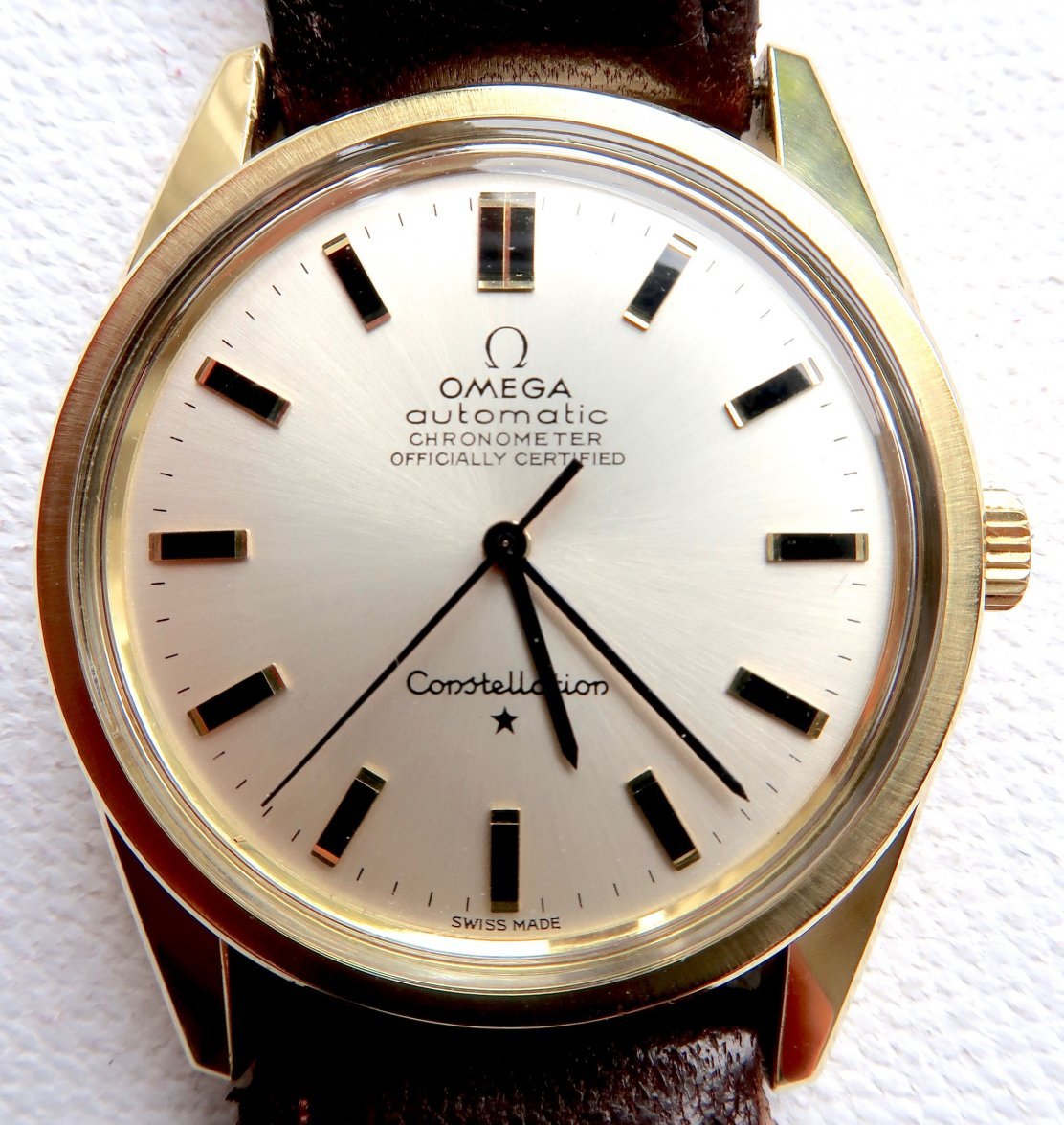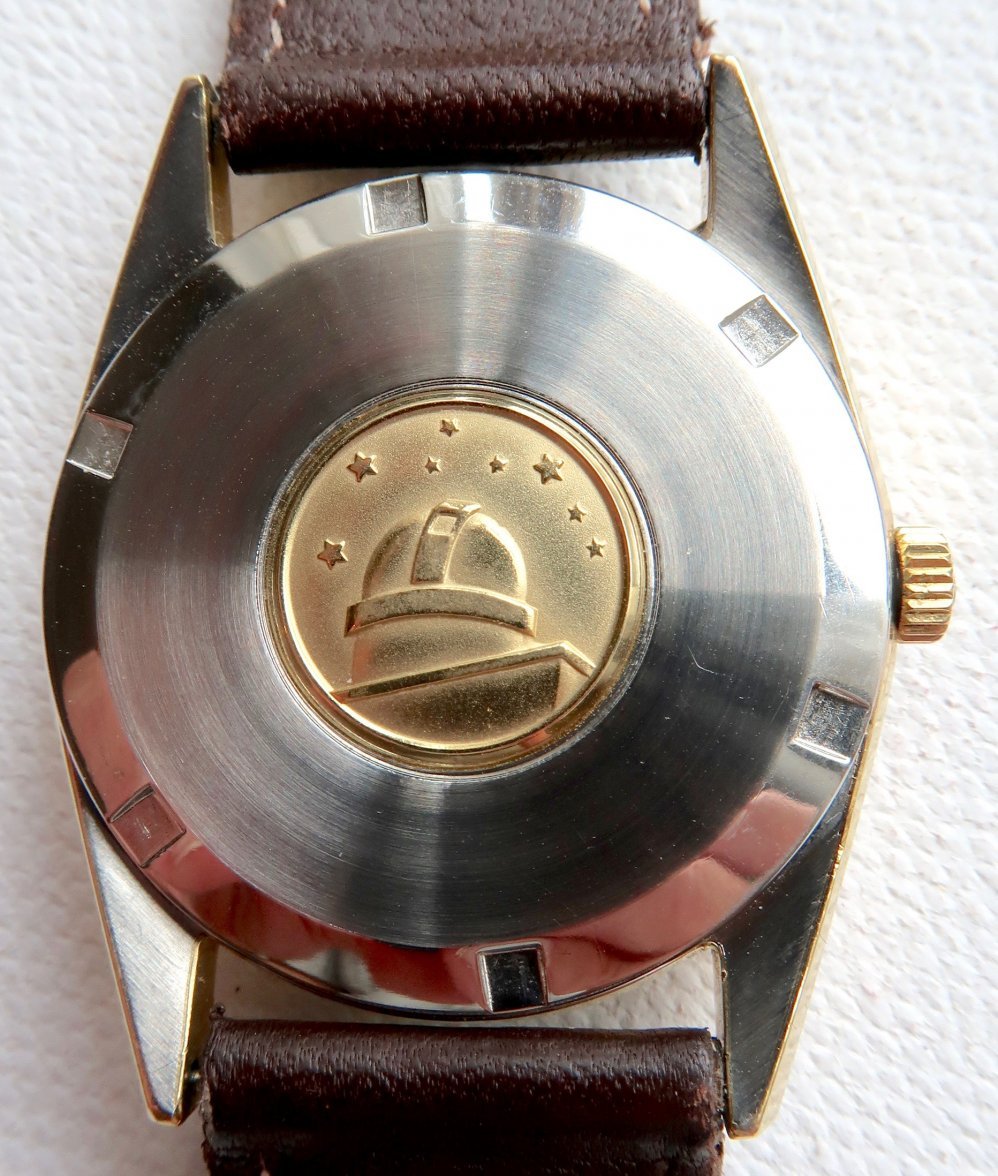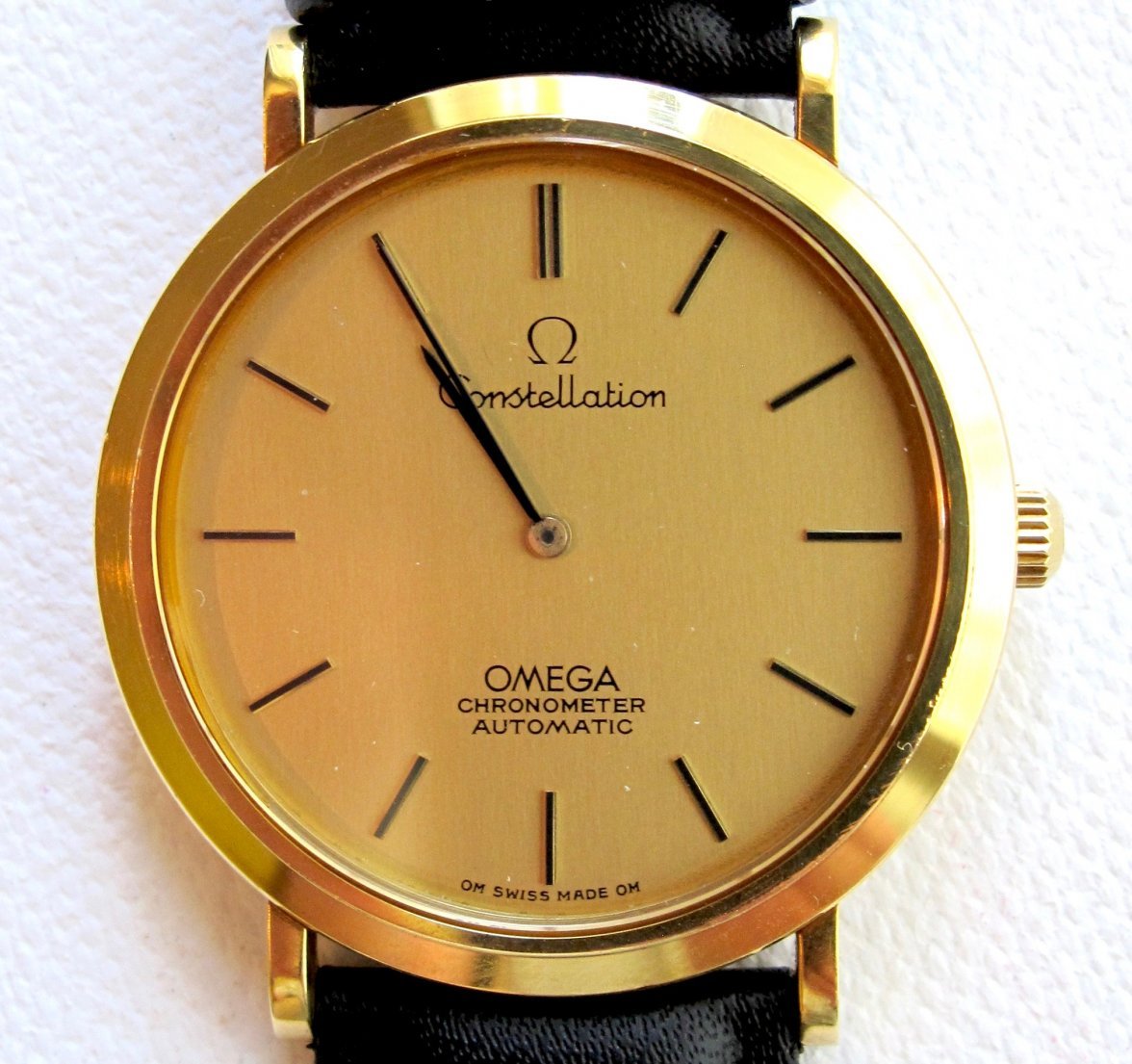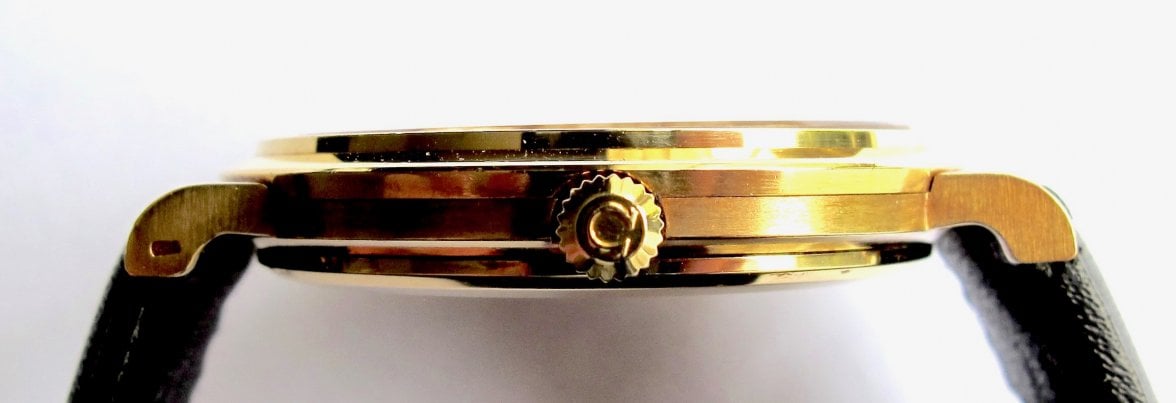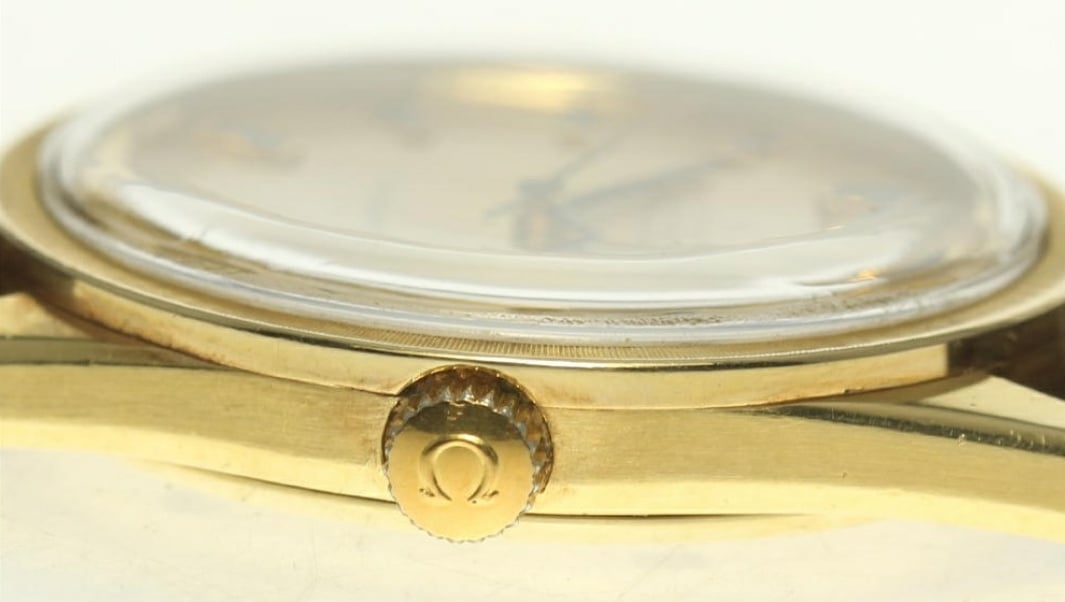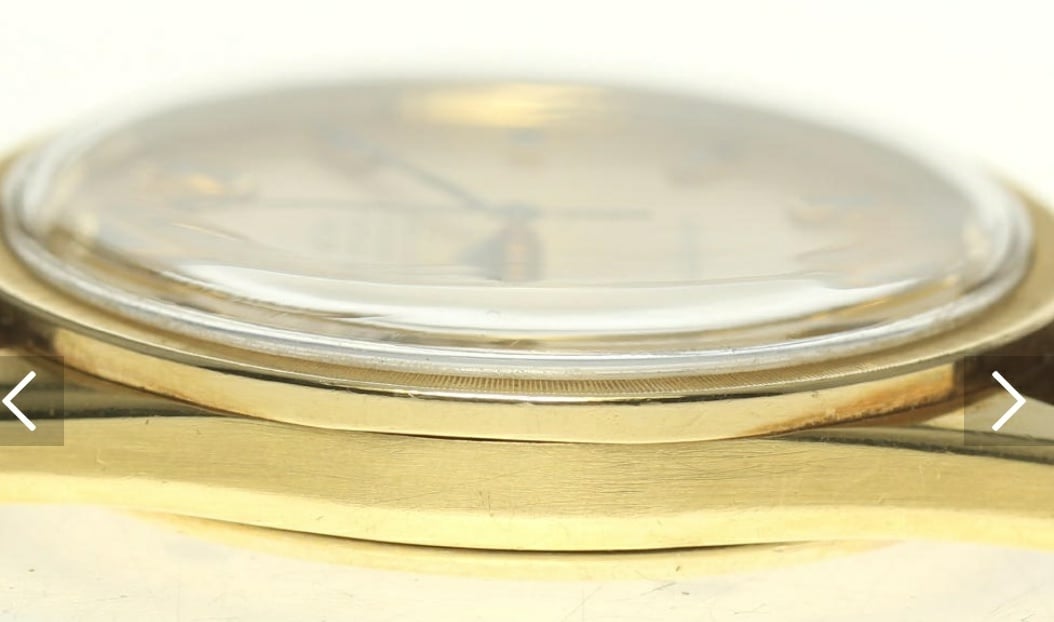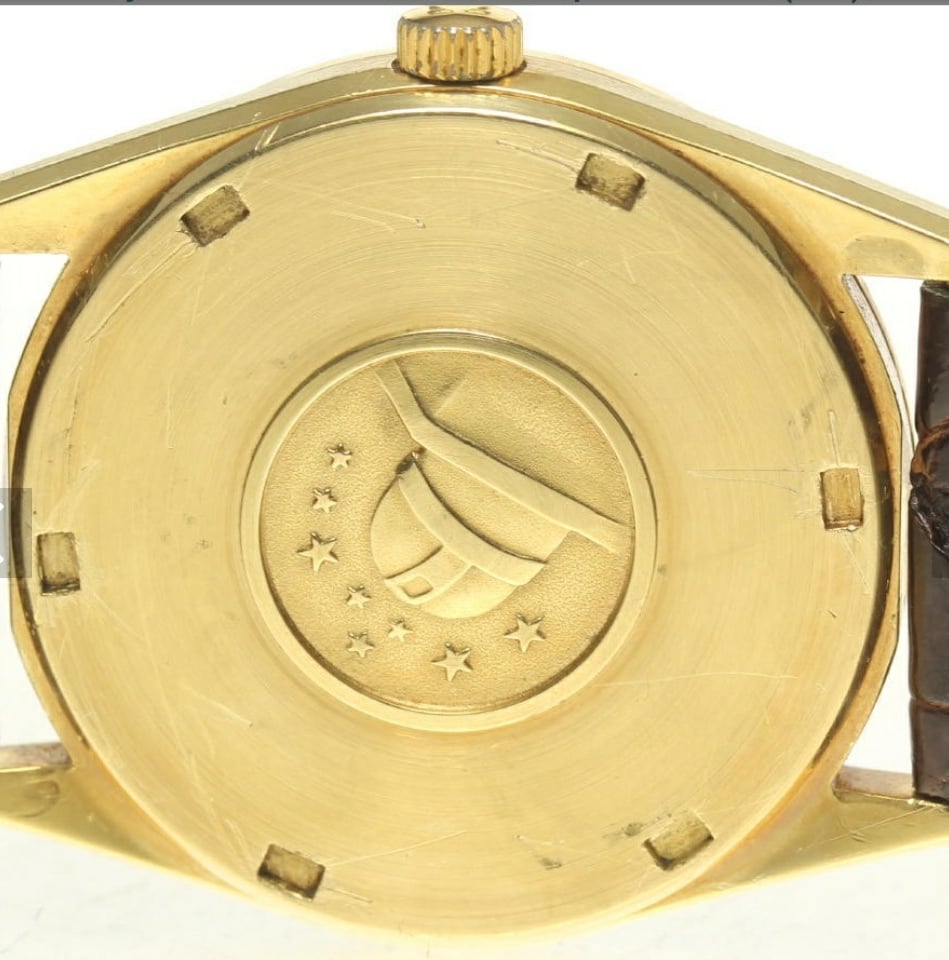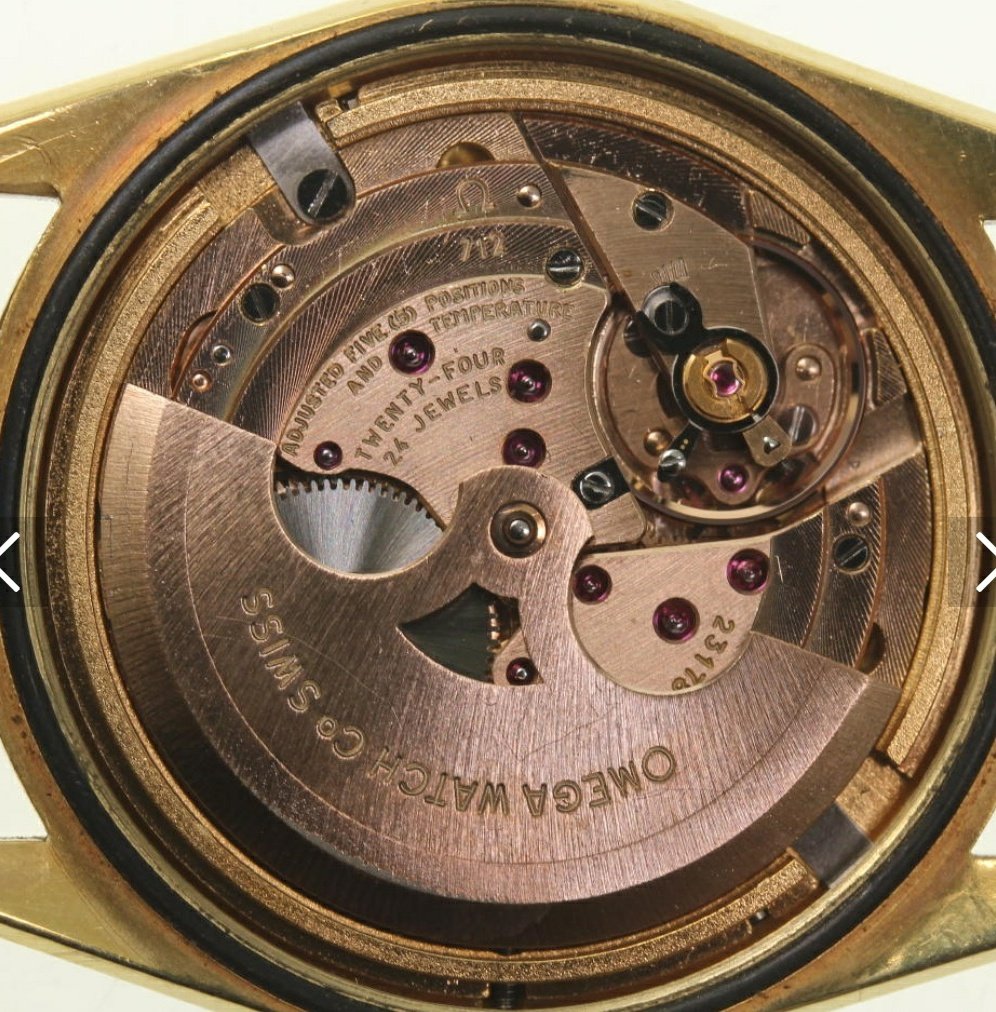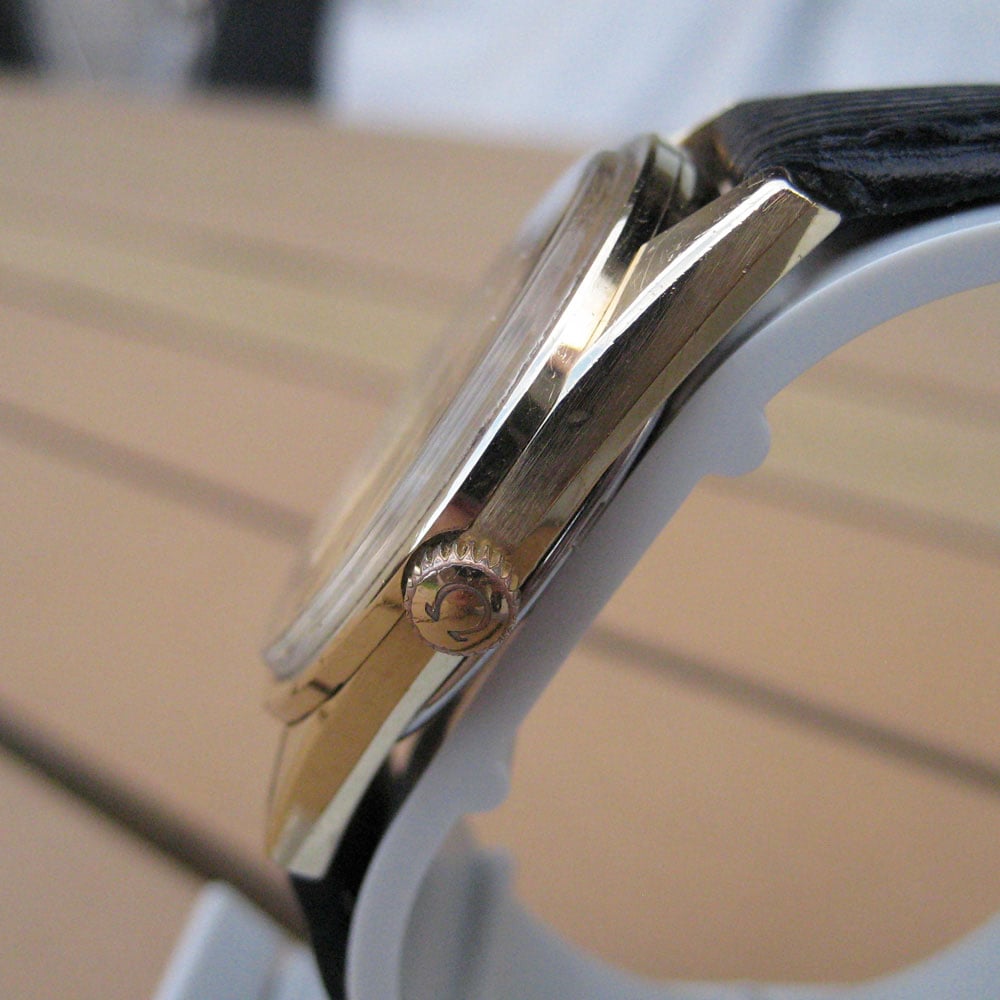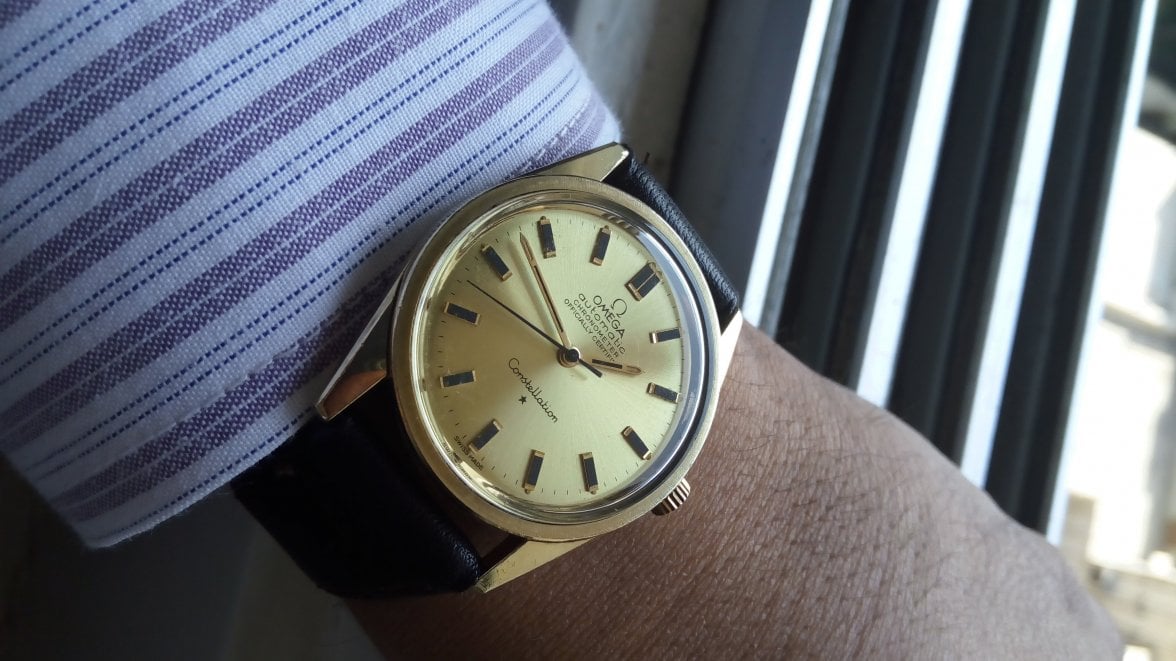lindo
·Last year whilst trawling through Desmond Guilfoyle’s Omega Constellation Collectors blogspot (http://omega-constellation-collectors.blogspot.com/), I came across his short essay on the ultra-thin calibres 700-712.
I was intrigued. My Constellation collection contained the usual 500-751 examples, all of which I enjoyed and occasionally added to or upgraded, but I had not given much thought to the ultra-thins, perhaps dismissing them too quickly as pretty dress watches.
Desmond’s essay pointed out that there was more to them than met the eye: in particular, the calibre 712. It intrigued me that a 3mm thick automatic movement could be produced that was chronometer certified. I knew there were thinner manual chronometer movements, but this was automatic.
So I started looking. And as any collector knows, once you start looking inevitably you will find something that you just have to buy.
There seemed to be more examples offered by Japanese vintage watch dealers than elsewhere, which indicated that they may have been more popular in Japan in the 1960s and 70s than in other countries.
Nice examples were considerably cheaper than their larger contemporary Constellation cousins. I found two that were in exceptional condition, and offer them here for your consideration. Fortunately neither watch has suffered from polishing, so you see them pretty much as they came from the factory.
The first is a gold capped Constellation automatic ultra-slim chronometer, calibre 712 movement, serial number indicating manufacture in 1966. Gold bezel, original flat topped Omega acrylic crystal, fine black hands, onyx inlaid gold hour markers, and a nice crisp gold observatory on the back.
The 33mm stainless steel screw back case is numbered SF167.027.
Unlike most of the 712s I found, it has a centre sweep seconds hand. Desmond noted that although the movements included provision for a sweep seconds hand, for stylistic reasons many of the dress 712s did not have them.
The second 712 I could not resist was a Constellation in 18k solid yellow gold, serial number indicating manufacture in 1968.
It has a solid gold dial (indicated by OM each side of Swiss Made), and a 34.5mm case numbered 157.0001. In the interests of making the watch as thin as possible, Omega fitted a sapphire crystal and made the case a spring back rather than screw back. This means its total thickness is only 7.2mm. The total thickness of the first watch is 8.7mm, the difference being due to the thicker acrylic crystal.
For comparison, my 1959 14381 pie pan in stainless steel measures 11.3mm total thickness.
(Yup I know it is dirty - since been cleaned up but my camera is out of action.)
I think the 712 series is more than just a pretty face. In fact if you are serious about collecting examples of vintage Constellations I suggest you need to have at least one 712 in your line up. The best news is that they are not as expensive (yet) as their thicker big brothers.
I am grateful to Desmond (mondodec in this Forum) for getting me interested.
I was intrigued. My Constellation collection contained the usual 500-751 examples, all of which I enjoyed and occasionally added to or upgraded, but I had not given much thought to the ultra-thins, perhaps dismissing them too quickly as pretty dress watches.
Desmond’s essay pointed out that there was more to them than met the eye: in particular, the calibre 712. It intrigued me that a 3mm thick automatic movement could be produced that was chronometer certified. I knew there were thinner manual chronometer movements, but this was automatic.
So I started looking. And as any collector knows, once you start looking inevitably you will find something that you just have to buy.
There seemed to be more examples offered by Japanese vintage watch dealers than elsewhere, which indicated that they may have been more popular in Japan in the 1960s and 70s than in other countries.
Nice examples were considerably cheaper than their larger contemporary Constellation cousins. I found two that were in exceptional condition, and offer them here for your consideration. Fortunately neither watch has suffered from polishing, so you see them pretty much as they came from the factory.
The first is a gold capped Constellation automatic ultra-slim chronometer, calibre 712 movement, serial number indicating manufacture in 1966. Gold bezel, original flat topped Omega acrylic crystal, fine black hands, onyx inlaid gold hour markers, and a nice crisp gold observatory on the back.
The 33mm stainless steel screw back case is numbered SF167.027.
Unlike most of the 712s I found, it has a centre sweep seconds hand. Desmond noted that although the movements included provision for a sweep seconds hand, for stylistic reasons many of the dress 712s did not have them.
The second 712 I could not resist was a Constellation in 18k solid yellow gold, serial number indicating manufacture in 1968.
It has a solid gold dial (indicated by OM each side of Swiss Made), and a 34.5mm case numbered 157.0001. In the interests of making the watch as thin as possible, Omega fitted a sapphire crystal and made the case a spring back rather than screw back. This means its total thickness is only 7.2mm. The total thickness of the first watch is 8.7mm, the difference being due to the thicker acrylic crystal.
For comparison, my 1959 14381 pie pan in stainless steel measures 11.3mm total thickness.
(Yup I know it is dirty - since been cleaned up but my camera is out of action.)
I think the 712 series is more than just a pretty face. In fact if you are serious about collecting examples of vintage Constellations I suggest you need to have at least one 712 in your line up. The best news is that they are not as expensive (yet) as their thicker big brothers.
I am grateful to Desmond (mondodec in this Forum) for getting me interested.
